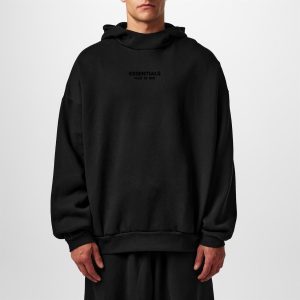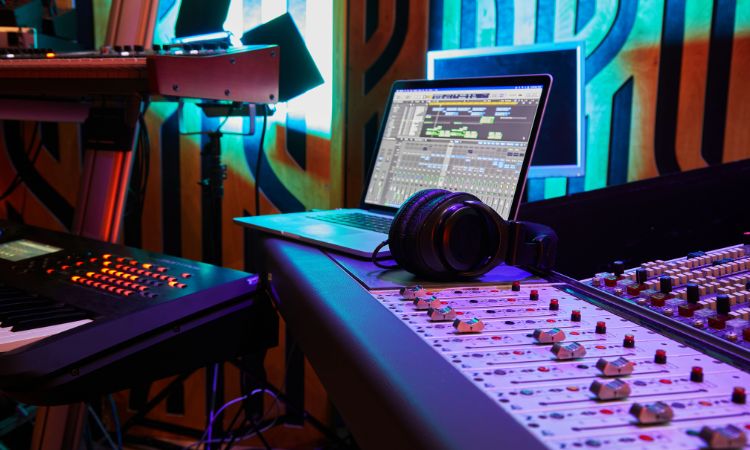
Essentials Hoodie: A Modern Wardrobe Staple
The Essentials hoodie has emerged as a dominant piece in the streetwear scene, blending comfort, minimalism, and high-quality craftsmanship. This versatile hoodie is a go-to for many, thanks to its understated aesthetic and widespread appeal. In this article, we’ll explore what makes the Essentials hoodie so iconic, its design philosophy, materials, styling tips, and why it has cemented its place in contemporary fashion.
The Origins of Essentials Hoodies
Essentials is a diffusion line by Fear of God, the luxury streetwear label founded by Jerry Lorenzo in 2013. Lorenzo created Essentials to offer affordable, high-quality basics that stay true to Fear of God’s core ethos. Essentials focuses on timeless designs with an emphasis on minimalism and functionality, making it accessible to a broader audience.
The hoodie, as one of the brand’s cornerstone pieces, embodies this mission. It quickly became popular for its effortless style, making it a favorite among streetwear enthusiasts and those seeking a premium yet understated wardrobe staple.
Key Features of Essentials Hoodies
1. Minimalist Design
The Essentials hoodie is known for its clean and simple aesthetic. It typically features a monochromatic color palette, with neutral tones like beige, black, gray, and white dominating the lineup. The brand’s logo—often printed or embossed in a subtle tone-on-tone design—is placed modestly on the chest, sleeve, or hood.
This minimalist approach ensures the hoodie is versatile and pairs effortlessly with a variety of outfits. The absence of flashy graphics or loud branding appeals to those who prefer a more refined streetwear look.
2. Premium Materials
The Essentials hoodie is crafted from high-quality fabrics that prioritize comfort and durability. Most hoodies are made with a cotton-polyester blend, which provides a soft, cozy feel while maintaining a structured fit. The material is breathable yet warm, making it suitable for year-round wear.
The inside of the hoodie often features a brushed fleece lining, enhancing its luxurious texture. This attention to detail ensures that the hoodie feels as good as it looks.
3. Oversized Fit
One of the defining characteristics of the Essentials hoodie is its oversized silhouette. This relaxed fit aligns with contemporary streetwear trends, offering a laid-back vibe while ensuring maximum comfort. The dropped shoulders and roomy design make it a statement piece that works well for layering.
Why the Essentials Hoodie Stands Out
1. Accessibility and Affordability
While Fear of God’s mainline pieces are often priced in the luxury range, Essentials provides a more affordable entry point into the brand. This accessibility has allowed the hoodie to reach a broader audience, from students to professionals.
2. Versatility
The Essentials hoodie can easily transition between casual and semi-formal settings. Its neutral colors and simple design make it easy to pair with jeans, joggers, or even tailored trousers. Whether you’re running errands, attending a casual outing, or relaxing at home, the Essentials hoodie fits the occasion.
3. Cultural Relevance
Thanks to collaborations with celebrities, influencers, and athletes, the Essentials hoodie has gained significant cultural cachet. Worn by the likes of Justin Bieber and Kanye West, it’s become a symbol of modern streetwear culture. Social media platforms, especially Instagram and TikTok, have further amplified its popularity.
How to Style an Essentials Hoodie
1. Casual Streetwear Look
For a classic streetwear vibe, pair your Essentials hoodie with oversized cargo pants or distressed jeans. Complete the look with chunky sneakers like Nike Air Force 1s or Yeezys. Adding accessories like a crossbody bag or a beanie can enhance the overall aesthetic.
2. Athleisure Outfit
The Essentials hoodie works perfectly in athleisure outfits. Pair it with matching sweatpants or slim-fit joggers for a cohesive look. Finish with sleek running shoes or slides for a sporty yet stylish ensemble.
3. Layered Fits
During colder months, the hoodie’s oversized fit makes it ideal for layering. Wear it under a trench coat, puffer jacket, or denim jacket for added warmth and dimension. Opt for neutral outerwear to maintain a cohesive look.
4. Smart-Casual Attire
For a more polished approach, pair the hoodie with tailored trousers and minimalist sneakers. The combination of relaxed and formal elements creates an effortlessly chic outfit.
Essentials Hoodie Variants
Essentials offers several iterations of its hoodie to cater to different preferences:
1. Classic Pullover Hoodie
This is the most iconic version, featuring a kangaroo pocket and adjustable drawstrings. It’s a timeless choice that works in virtually any setting.
2. Zip-Up Hoodie
For those who prefer more versatility, the zip-up variant offers the same premium quality with added functionality. It’s great for layering and can be styled open or closed.
3. Reflective Logo Hoodie
This version adds a modern twist to the classic design by incorporating reflective branding. It’s perfect for making a subtle statement, especially in low-light settings.
4. Seasonal Colorways
Essentials frequently releases seasonal drops with unique color palettes. From pastel hues in spring to earthy tones in fall, these limited-edition colorways keep the hoodie fresh and exciting



